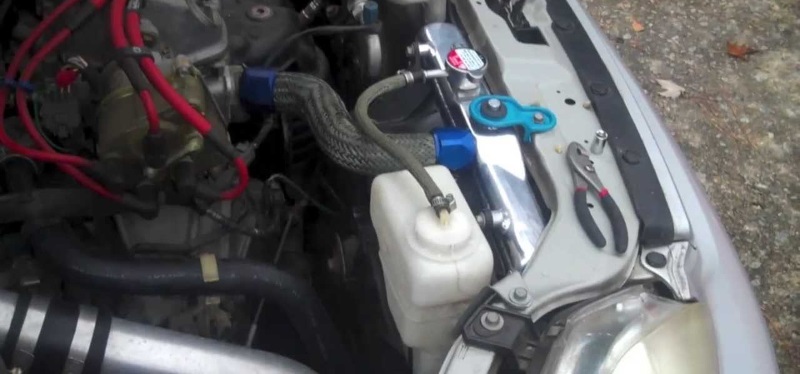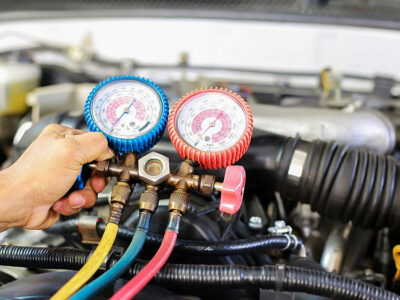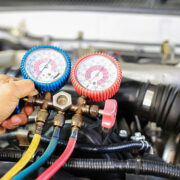
Rust is a common element in the cooling system due to airflow in the radiator after the engine has cooled down. After the engine is switched off, the coolant shrinks in volume, causing a reduction in temperature and pressure inside the radiator, enabling air to enter via the radiator cap. When that air comes into touch with the metal in the cooling system, it will cause rust to develop. Consequently, this rust formation forces you to flush out the design and replace it with antifreeze.
However, there’s an option that can help in the prevention of these rust formations. This is called the radiator overflow tank. The radiator overflow tank is a simple item that may help you save a ton of cash by preventing rust from developing in your car’s cooling system. The engine coolant is necessary, especially when the engine performs; this helps maintain it at safe working temperatures. The engine coolant absorbs the heat from the engine. When the coolant in the radiator heats up, it expands, causing the pressure in the vehicle’s cooling system to rise.
Therefore, whenever the coolant pressure in the radiator exceeds the radiator cap’s designed pressure, through the overflow tube, antifreeze passes through the radiator cap seal and into the coolant reservoir overflow tank. Consequently, the coolant will begin to cool down once the engine has been switched off. It will also compress in volume as it cools down. Because of the loss in pressure, this decrease in volume will result in a vacuum. Hence, A vacuum valve in the radiator cap opens as a result of the void, enabling the coolant that was flown into the radiator coolant overflow tank to flow back into the radiator. Vehicles that do not have this coolant are more likely to sustain rust.
Therefore, installing an overflow tank in your automobile is a good method to keep your car’s cooling system in excellent shape and save money on repairs and replacements in the long term.
The reason you need an overflow tank
Your car needs an overflow tank; since the coolant solution has been heated and expanded, the pressure within the coolant pipes has raised.. The enlarged coolant must be disposed of. Any liquid that no longer fits inside the primary cooling system is pushed into the overflow tank, where it is held until the temperature of the engine coolant drops.
Therefore, As the coolant cools, it shrinks and expands the amount of space inside the cooling system once more. The coolant contracts, creating a negative pressure that pulls the excess coolant from the overflow tank back into the primary cooling system. As a result, your overflow tank acts as an expansion vessel, allowing the coolant mixture to expand and contract as it heats and cools without over pressurizing the cooling system and causing damage.
Therefore, when the cooling system’s pressure is too high, the radiator coolant overflow tank fills with coolant, and when the system is under pressure, it withdraws coolant from the tank.
It does, however, prevent the water from boiling and raises the boiling temperature by a few degrees. Hence acts like an antifreeze. Additionally, It lowers the freezing point of water, preventing it from freezing in colder conditions while the vehicle is not in use.
Therefore, it is necessary to have an overflow tank to help gain from the benefits mentioned earlier.












